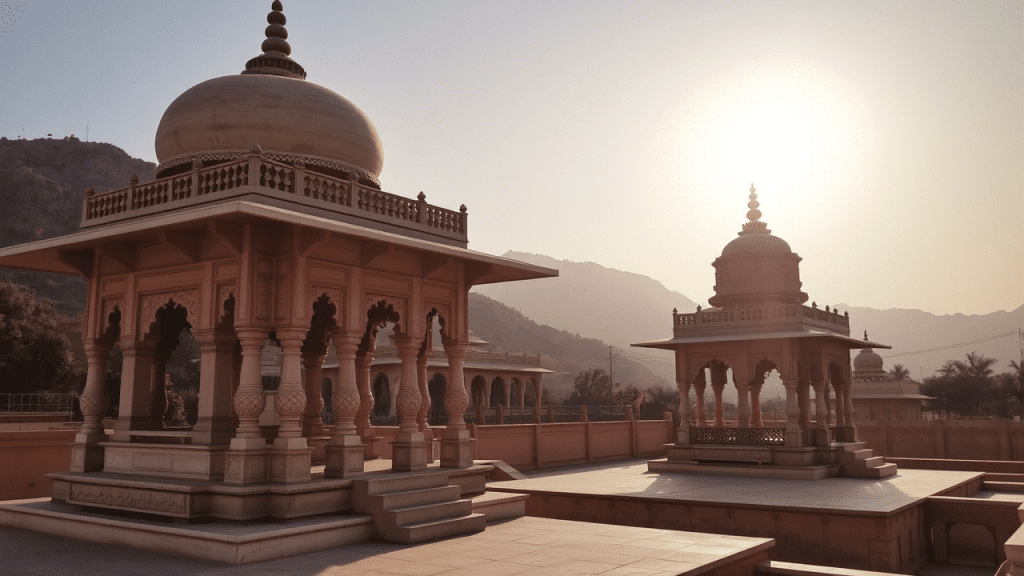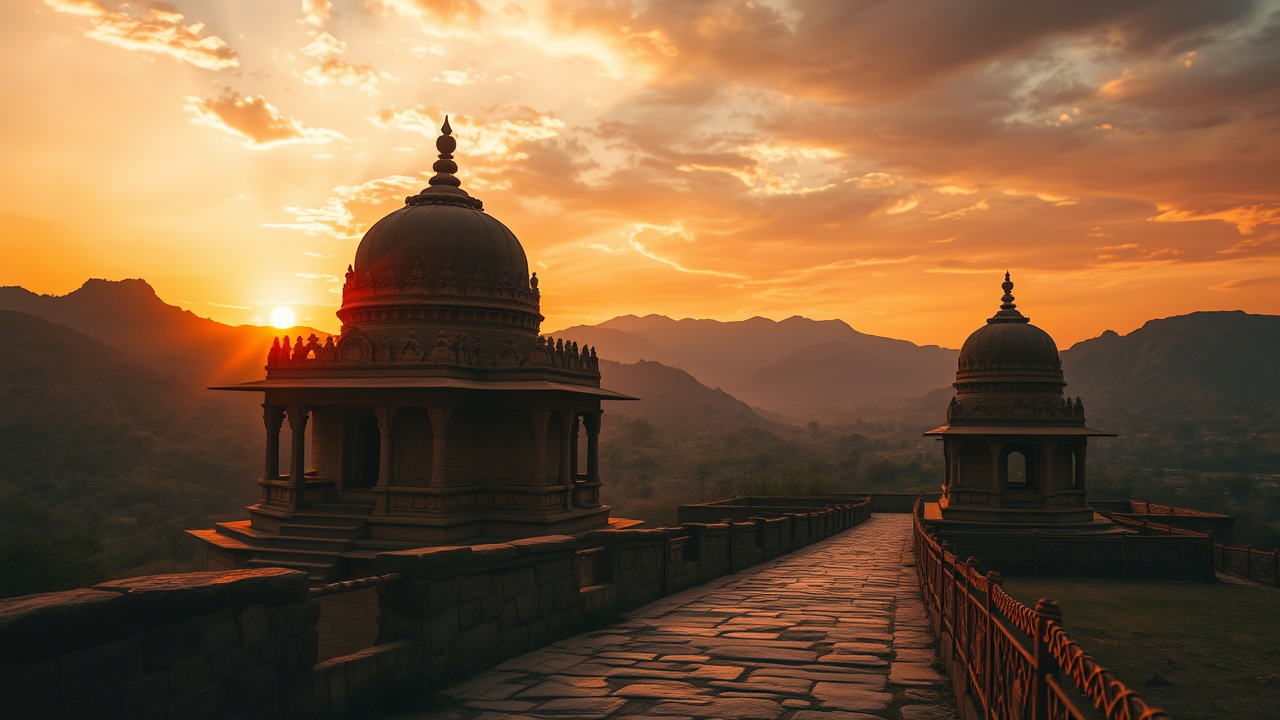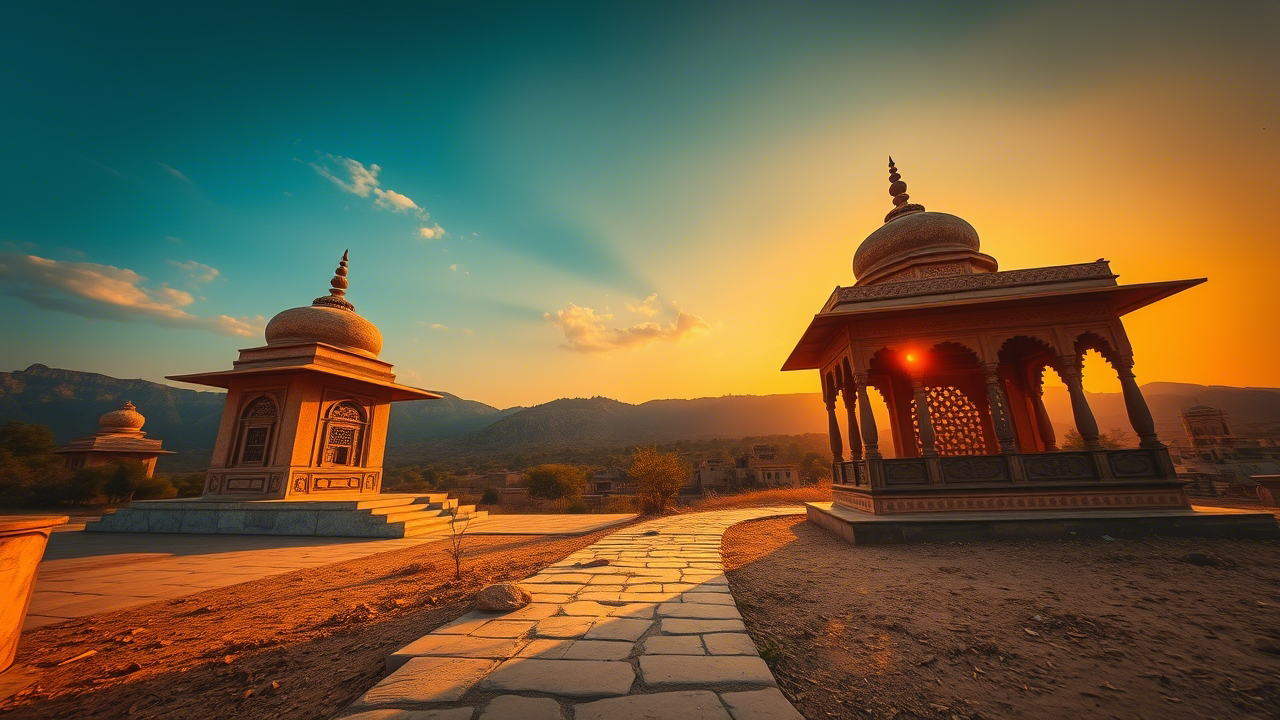- Private car and driver in Delhi / India
- +91-8447445445
- info@discoverindiabycar.com sugar.ankit@yahoo.com
 +91-9818434712
+91-9818434712
Gaitor Ki Chhatriyan: A Serene Journey to Jaipur’s Royal Past

Ready for a Different Slice of Jaipur? Let’s Explore Gaitor Ki Chhatriyan
Hey there! Planning a trip to Gaitor Ki Chhatriyan Jaipur? Awesome choice! You’re probably picturing those amazing forts – Amber, Nahargarh – or maybe the gorgeous City Palace, right? Those are all incredible, absolutely iconic Jaipur experiences.
But listen, I want to tell you about a place that offers something… well, something a little different. A place just outside the main city buzz, tucked away, that has a quiet beauty and tells a truly unique story about Jaipur’s rulers. We’re heading to Gaitor Ki Chhatriyan.
Sometimes people just call it ‘Gaitor’. It’s not a palace where kings lived, nor a fort where battles were fought. Nope. This is the historical, designated ground where the Maharajas of Jaipur were cremated. Think about that! For centuries, this hillside became the final stop for the rulers, beginning way back in the early 1700s.
While the legendary founder of Jaipur, Sawai Jai Singh II himself, has arguably the most stunning memorial here, Gaitor Ki Chhatriyan became the standard site for almost every ruler who came after him. Visiting here is stepping into a kind of open-air gallery of history, marked by these beautiful, dome-topped stone structures called ‘chhatris’ (that’s the Hindi word for umbrella, and they look a bit like elegant stone umbrellas!).
If you appreciate historical depth, incredible craftsmanship, and finding a spot in a busy tourist city where you can actually feel some peace and quiet, then seriously, seriously consider putting Gaitor Ki Chhatriyan on your list. Let’s dig into what makes it so special.
Stepping Back in Time: The History Behind Gaitor Ki Chhatriyan
You see, there’s a long-standing tradition in India, particularly among the royal families, linked to Hindu cremation practices. After a ruler was cremated, it was often customary to build a lasting memorial structure right over that specific spot.
It was a powerful way to honor their life, remember their reign, and link them permanently to the family’s legacy. For the ruling Kachwaha family of Jaipur, they decided Gaitor Ki Chhatriyan would be their official spot for this incredibly significant ritual. This decision really solidified after the time of Sawai Jai Singh II, though, as mentioned, his own memorial here is incredibly important.
Picture this unfolding over generations. Maharaja after Maharaja, from the 18th century onwards, completing their earthly journey and being brought to this very hillside for their final ceremony. And every single time, the new ruler, the son or successor, would undertake the solemn task of commissioning a unique ‘chhatri’ to be built on that exact cremation site.
It wasn’t just about constructing a building; it was a fundamental act of respect, continuity, and etching the family’s timeline directly into the landscape. This practice continued for over two whole centuries! Think about all the history that unfolded during those years – the growth of Jaipur, the political shifts, the cultural developments – and how each ruler’s life culminates in this quiet place.
Standing at Gaitor Ki Chhatriyan today, you are literally walking among the permanent stone tributes to this long and fascinating lineage of kings. It feels less like reading a textbook and more like sensing the weight of centuries all around you.

Stone Speaks Volumes: The Amazing Architecture of Gaitor Ki Chhatriyan
Alright, let’s get into the beauty of the place – the architecture! What you’ll find at Gaitor Ki Chhatriyan is a collection of numerous chhatris, each one a memorial dedicated to a particular Maharaja. And while they all share that basic purpose, they are wonderfully, wonderfully distinct.
You’ll notice differences in size, sure, but also in the sheer complexity of the design and the incredible detail of the carvings. These variations give you a visual timeline, reflecting the style and craftsmanship popular during the era each one was built.
Built primarily using beautiful, locally quarried marble and sandstone – materials that just feel right in Rajasthan – these structures are fantastic examples of Rajput architecture. But here’s where it gets really interesting: they also show off clear influences from the Mughal style, which was super dominant during that period.
You can spot the classic Rajput features pretty easily: strong, often heavily carved pillars; those graceful, curving domes (the ‘chhatri’ shape again!); and the general open-sided pavilion design that allows air and light to flow freely.
Now, look for the Mughal touches! They appear in the incredibly fine jali (stone lattice) work – seriously delicate stuff! – the overall sense of planned symmetry in some of the larger structures, and the stunning floral, geometric, and even sometimes figurative patterns carved into the stone surfaces.
Each chhatri typically sits on a raised platform, which might be square, octagonal, even round sometimes. From this base, the pillars rise, supporting the roof and that characteristic dome. But honestly, the real show is in the carvings that cover almost every available surface.
These aren’t just decorative little flourishes; they are incredibly detailed stories and images carved into the stone. You’ll find vivid scenes lifted straight from Hindu mythology and epics, depictions of gods and goddesses, grand royal processions complete with elephants, horses, and attendants, glimpses of courtly life, and even charming little details showing aspects of everyday life from centuries ago.
Moving from one chhatri to the next at Gaitor Ki Chhatriyan is like walking through an outdoor museum of stone artistry, letting you observe how the styles changed and how incredibly skilled the artisans were over time.
The cenotaph built to honor Sawai Jai Singh II? As you might guess, it’s the largest and most elaborate. Its extensive marble carvings are simply spectacular and really highlight the peak of carving artistry from his time. It’s a must-see within the complex.

The Vibe: Finding Peace at Gaitor Ki Chhatriyan
Okay, let’s talk about the feeling of being there. Step inside Gaitor Ki Chhatriyan, and chances are, the first thing that hits you is the quiet. It’s such a refreshing contrast to the energy you find elsewhere in Jaipur.
This peaceful atmosphere is a big part of the experience. It gives you space to slow down, breathe, and actually look at the intricate work without feeling rushed by crowds.
Walk around. Take your time. Notice the textures of the stone. See how the sunlight streams through the delicate stone screens, casting beautiful, moving patterns on the ground. Look closely at one of the carvings – the tiny expressions, the flow of fabric, the muscles on an animal.
It’s a place that encourages you to be present, to contemplate the history and the sheer human effort poured into these memorials. It doesn’t feel like a tick-the-box tourist site; it feels like a serene, almost sacred garden dedicated to memory and craftsmanship.
And for photographers? Oh my goodness, Gaitor Ki Chhatriyan is a goldmine. The way the light interacts with the stone structures, the beautiful symmetry, the incredible details in the carvings, and the backdrop of the Aravalli hills – it offers endless opportunities for stunning shots.
Early morning or late afternoon (often called ‘golden hour’) is particularly magical here, bathing everything in soft, warm light that makes the stone glow and enhances the textures. It’s a perfect spot to capture not just historical monuments, but a feeling of timeless peace and artistic beauty.
Let’s Get Practical: Planning Your Trip to Gaitor Ki Chhatriyan
Alright, ready to include Gaitor Ki Chhatriyan in your Jaipur adventure? Here’s the practical stuff you’ll want to know:
- Getting There is Easy: Gaitor Ki Chhatriyan sits just a little outside the main city area of Jaipur, near the base of the hills heading towards Nahargarh Fort. Seriously, getting there is straightforward. Just flag down an auto-rickshaw or book a taxi from pretty much anywhere in Jaipur. The short drive is part of the experience, offering nice views as you approach the foothills.
- What About Timings? Generally speaking, Gaitor Ki Chhatriyan is open every day of the week. You can usually visit from something like 9:30 AM or 10 AM right through to 5 PM or 5:30 PM. Important: Always, always double-check the current operating hours online or by asking a local source right before you plan to go. Sometimes things change!
- Is There an Entry Fee? Yes, there is a modest entry fee to enter Gaitor Ki Chhatriyan. The cost is typically different for Indian citizens compared to foreign tourists. Also, just a heads-up, they might have a separate, small fee if you’re bringing a camera or video recording device with you. It’s really quite affordable for such a unique historical experience, though.
- When’s the Best Time to Go? For the weather, aim for the cooler months – think October through March. Within any given day, your best bet is definitely early morning (shortly after they open) or late afternoon (maybe an hour or two before closing). Why? The light is fantastic for photos, and the temperature for walking around the open complex is much more pleasant than the midday heat.
- How Long Should I Budget? You can comfortably explore Gaitor Ki Chhatriyan, really soak in the details, take photos, and enjoy the peaceful atmosphere in about 1 to 1.5 hours. No need to rush! Take your time and enjoy the quiet.

Still Thinking? Here’s Why Gaitor Ki Chhatriyan is a Must-See
Okay, if you’re still weighing your options for your Jaipur itinerary, let me give you a few solid reasons why adding Gaitor Ki Chhatriyan is a fantastic idea:
- A Glimpse of Unique History: It offers a completely different, more personal angle on Jaipur’s royal story – focusing on lineage, remembrance, and a significant cultural tradition. It’s not just about where they lived, but how they were commemorated.
- Stunning, Detailed Architecture: Seriously, the stone carvings are incredible. The mix of Rajput and Mughal styles is fascinating to see, showcasing amazing historical artistry up close.
- Need Peace? Find it Here: If the crowds at some major attractions wear you out, Gaitor Ki Chhatriyan is your peaceful oasis. It’s genuinely quiet, calm, and offers a serene escape.
- Photographers, Rejoice! The light, the symmetry, the textures – it’s a dream location for anyone with a camera looking for beautiful, unique shots.
- Feels Like a Discovery: While it’s known, it’s definitely less swamped with tourists than the Amber Fort or City Palace. This allows for a more relaxed, personal experience of discovering history.
Seriously, Gaitor Ki Chhatriyan is more than just another historical site; it’s a blend of profound history, stunning artistry, and peaceful serenity, all wrapped up in one beautiful location.

Quick Answers for You: Gaitor Ki Chhatriyan FAQs
Let’s cover some of the most common questions people ask about Gaitor Ki Chhatriyan:
Q1: What exactly is Gaitor Ki Chhatriyan?
A: It’s the historical cremation ground for the Maharajas of Jaipur. The structures you see are called chhatris, which are memorial cenotaphs built right over the spots where the rulers were cremated.
Q2: Are people actually buried there?
A: No, it’s not a burial ground. It’s a cremation site. The chhatris are memorials built above ground, over the location of the cremation.
Q3: What does the word ‘Chhatri’ mean?
A: ‘Chhatri’ literally translates to ‘umbrella’ in Hindi. In architectural terms, it refers to the dome-shaped pavilions or cenotaphs, like the ones prominent at Gaitor Ki Chhatriyan.
Q4: What kind of architecture should I expect?
A: You’ll see a lovely mix of Rajput and Mughal architectural styles at Gaitor Ki Chhatriyan. Expect to see beautiful stone carvings, pillars, domes, and intricate lattice work (jali).
Q5: What are the usual opening hours and entry fee for Gaitor Ki Chhatriyan?
A: Typically, it’s open daily from around 9:30/10 AM to 5/5:30 PM. There’s a modest entry fee that differs for Indian citizens and foreign tourists. A small separate fee might apply for cameras. It’s always best to check the latest info online or locally before your visit!
Q6: How long should I plan to spend visiting Gaitor Ki Chhatriyan?
A: Most visitors find that 1 to 1.5 hours is plenty of time to explore the area comfortably, appreciate the architecture, and take photos.
Q7: Can I take photos at Gaitor Ki Chhatriyan?
A: Yes, photography is generally permitted, though there might be a small separate charge for cameras or video recorders. It’s a very photogenic location, so definitely bring your camera!
Wrapping It Up: Your Peaceful Moment at Gaitor Ki Chhatriyan
Jaipur is full of showstoppers, absolutely! But places like Gaitor Ki Chhatriyan offer something quieter, deeper, and incredibly moving. It’s a space where the grandeur of Rajput history is presented not with pomp and show, but with dignity, artistry, and a profound sense of peace. It’s a tribute, carved in stone, to the rulers who shaped one of India’s most beautiful cities.
Walking among the incredibly detailed chhatris at Gaitor Ki Chhatriyan, surrounded by the quiet, feeling the history, and seeing the amazing craftsmanship – it’s an experience that truly enhances your understanding of Jaipur and its past. It’s a chance to step away from the typical tourist route and discover a place of unique beauty and historical weight. So, as you map out your perfect Jaipur visit, do yourself a favor and make time for Gaitor Ki Chhatriyan. It’s a peaceful journey through royal history you won’t soon forget.











